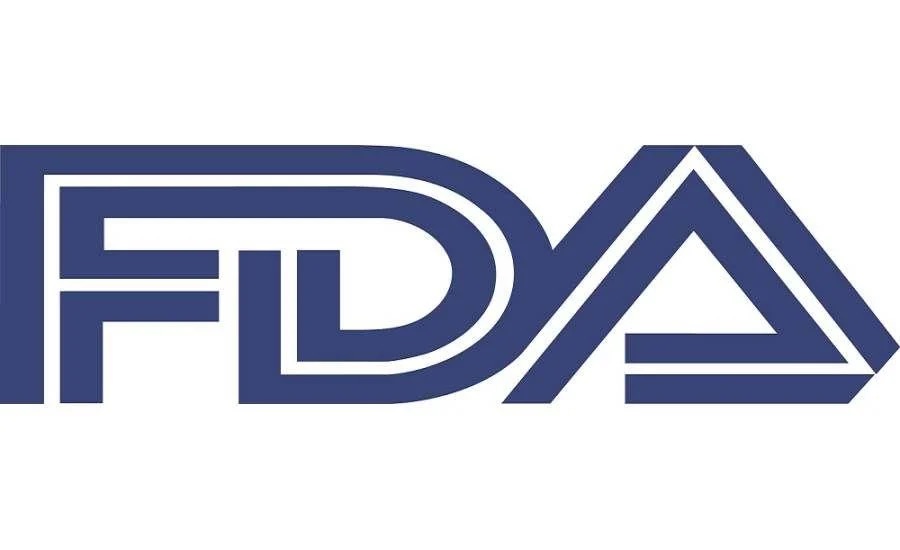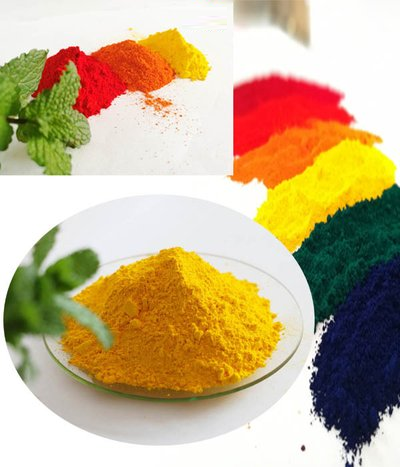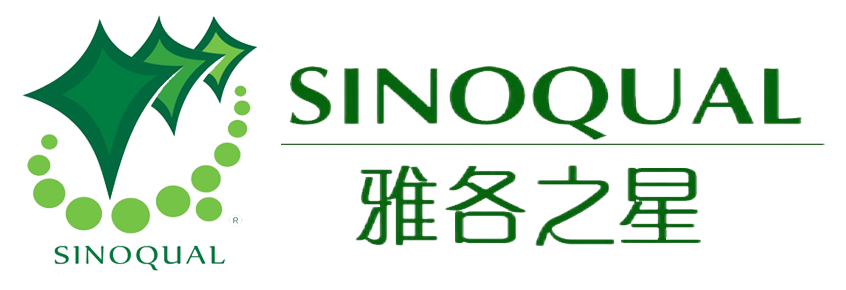The global beauty industry is undergoing a transformation as consumers increasingly demand products that demonstrate transparency, ethical sourcing, and ingredient purity...
From Food Additives to GRAS: A Complete Analysis of FDA's Regulatory Policy
2025-07-11
U.S. Food and Drug Administration (The FDA) Data Standards Committee is currently reviewing vocabulary across the FDA.
Therefore, the wording of some of the following terms may change slightly in the future.

Biotechnology
refers to the method scientists use to modify DNA (DNA) or genetic material from microorganisms, plants, or animals to achieve desired traits. In the context of food, genetically modified plant foods are produced from crops whose genetic makeup has been altered through a process called recombinant DNA or gene splicing to impart desired traits. Genetically modified foods are also referred to as biotechnology, bioengineering, and transgenic, although "GM" can also refer to plant foods that have been altered through methods such as conventional breeding. While biotechnology is broadly defined as the technological application of biology, common usage in the United States has narrowed the definition to foods produced using recombinant DNA. For more information, see the CFSAN Biotechnology Program on the internet.
CEDI/ADI Database
For a large number of food contact substances,CFSAN maintains a database of Cumulative Estimated Daily Intakes (CEDIs) and Acceptable Daily Intakes (ADIs). The CEDIs and ADIs are based on currently available information and may be revised as information is submitted or provided. The CEDI/ADI database is updated approximately twice a year. The CEDIs and ADIs are based on currently available information and may be revised based on new information submitted to OFAS.
Color additives
A color additive is a dye, pigment, or other substance that imparts color when added to or applied to food, drugs, cosmetics, or the human body. The legal definition is found in the Federal Food, Drug, and Cosmetic Act (FD&C Act).Color additives for use in foods, drugs, and cosmetics require premarket approval. Color additives for use in medical devices or intended for use in medical devices that come into direct contact with the human body for extended periods of time also require premarket approval. For more information, see the CFSAN Color Additive Program on the internet.

Colorants
A colorant is a dye, pigment or other substance used to impart color to or change the color of a food contact material but which does not migrate into food and is present in an amount that produces any color visible to the naked eye.“Coloring agents” include substances such as fluorescent whitening agents and fluorescent brighteners, which may not themselves be coloring agents but whose use is intended to affect the color of food contact materials. (21 CFR 178.3297(a))
EAFUS
“All products added to U.S. foodThe EAFUS database is an information database maintained by CFSAN under an ongoing program called Priority-Based Assessment of Food Additives (PAFA). PAFA contains regulatory, chemical, and toxicological information on more than 2,000 substances added directly to food, including FDA-regulated direct food additives, secondary direct food additives, color additives, GRAS, and preapproved substances. Additionally, the database contains regulatory and chemical information on only approximately 1,000 of these substances. For a complete list of EAFUS substances, see the EAFUS List.
food additives
Food additives inSection 201(s) of the FD&C Act defines a substance as any substance whose intended use results, or could reasonably be expected to result, directly or indirectly, in its becoming a component of any food or otherwise affecting the characteristics of any food (including any substance intended for use in the production, manufacture, packing, processing, preparation, treatment, packaging, transportation, or holding of food; and including any radiation source used in any such use); if the substance was not GRAS or approved before 1958 or was otherwise excluded from the definition of a food additive。
Food contact substances (FCS)
Section 409 of the FD&C Act defines a food contact substance as any substance intended for use as a component of material in the manufacture, packaging, packing, transport, or holding of food, provided that the use of the substance is not intended to have any technological effect on such food. For more information, visit the Food Contact Substance Notification Program page.
From food contact substancesThere is a hierarchy from food contact materials (FCS) to food contact materials (FCM) to food contact articles (FCA).
·Food contact substancesA substance (the subject of a food contact notification) is a single substance, such as a polymer or an antioxidant in a polymer. As a substance, it is fairly pure (a chemist's definition of a substance). Even though a polymer may be made up of several monomers, it still has a well-defined composition.
·Food contact materials (FCM is made from FCS and (usually) other substances. It is usually (but not necessarily) a mixture, such as antioxidants in polymers. The composition can be variable.
·Food contact articlesis the finished film, bottle, dough hook, tray orAny item formed by FCM.
GRAS
“GRAS”It is a phraseGenerally Recognized As Safe (GRAS) stands for "Generally Recognized As Safe." Under sections 201(s) and 409 of the FD&C Act, any substance intentionally added to food is considered a food additive and is subject to FDA premarket review and approval unless the substance is generally recognized by qualified experts to be safe under the conditions of its intended use or unless its use is exempt from the definition of a food additive. GRAS substances are distinguished from food additives by the type of information supporting the GRAS conclusion—that is, it is publicly available and generally accepted by the scientific community, but should be the same quantity and quality of information supporting the safety of food additives. For more information on GRAS, visit the GRAS Notification Program page.
Guidance Documents
The guidance document is forGuidance documents are documents prepared by FDA staff, applicants/sponsors, and the public that describe the agency's interpretation or policy on regulatory issues. These include, but are not limited to, documents related to the design, production, labeling, promotion, manufacture, and testing of regulated articles; the handling, content, and evaluation or approval of submissions; and inspectional and enforcement policies. Guidance documents are not legally binding on the public or FDA and do not establish legally enforceable rights or responsibilities. They represent the agency's current thinking. (21 CFR 10.115) A complete list of CFSAN guidance documents is available online.
Indirect food additives
Generally, these food additives come into contact with food during packaging, storage, or processing but are not intended to be added directly to food, become an ingredient, or have a technological effect in or on food. (Indirect food additives for food contact articles covered by Title 21 (21 CFR 170.39) include adhesives and coating ingredients (Part 175), paper and paperboard ingredients (Part 176), polymers (Part 177), and adjuvants and manufacturing aids (Part 178). Currently, other indirect food additives are authorized through the Food Contact Notification Program. Additionally, indirect food additives may be authorized through 21 CFR 170.39.
PAFA
Priority-Based Food Additive Evaluation (The PAFA database serves as CFSAN's institutional memory for the toxicological effects of food ingredients known to be used in the United States. Currently, PAFA contains oral toxicology information for over 2,100 of the approximately 3,300 direct food ingredients used in U.S. foods. PAFA also contains minimal information on over 3,200 indirect additives, including their names, CAS numbers, and regulatory information from the Code of Federal Regulations. The EAFUS list and indirect additive lists on the CFSAN Internet are composed of selected information fields generated from PAFA.
Previously sanctioned substances
Letters issued by the FDA or USDA do not object to a substance for a specific use that is the subject of a letter in or on food. Previous sanctions only targeted substances for specific uses in food that were specifically approved by the FDA or USDA before September 6, 1958, at established levels, conditions, and products. Some previously sanctioned substances are codified in 21 CFR Part 181.
SCOGS report
"SCOGS" stands for the Special Committee on GRAS Substances. Beginning in 1972, under contract to the FDA, the Office of Life Sciences Research of the Federation of American Societies for Experimental Biology convened special committees to independently and comprehensively review the safety and health aspects of GRAS food substances on the FDA's then-proposed GRAS list. The special committees published their assessments in a series of reports known as SCOGS reports. The opinions and conclusions of 115 SCOGS reports issued between 1972 and 1980 are listed on the CFSAN website.
Secondary direct food additives
The term is located inTitled 21 CFR 173, this regulation was created during the 1977 revision of the food additive regulations. Secondary direct food additives have a technological effect on food during processing but do not have a technological role in processing aids (e.g., processing aids). Some secondary direct food additives also meet the definition of food contact substances. For more information on food contact substances, see the Food Contact Substance Notification Program.
Regulatory thresholds (TOR) exemption
If a substance used in a food contact article has been shown to comply with the U.S. Code of Federal Regulations,If a substance does not meet the requirements of 21 CFR 170.39, the substance may be exempt from the requirements of the food additive listing regulation. For more information, see 21 CFR 170.39. For a complete list of TOR exemptions, see the Regulatory Threshold List on the CFSAN website.
